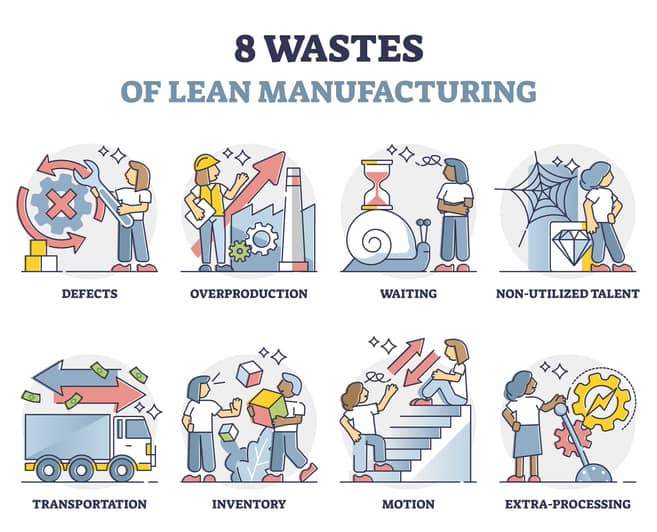Like every industry, insurance must update its work processes or run the risk of allowing them to become outdated and unsuccessful. And of all the executives in all industries, none understand risk better than those in insurance.
To avoid this issue, insurance leaders have enthusiastically implemented Lean and Six Sigma strategies and training in every corner of the industry. The areas impacted range from customer satisfaction and company culture to claims reduction and standardizing routine office processes.
A recent example came from Employers, a small business insurance company that launched a program to train Lean Six Sigma Green Belts throughout the company. The plan has resulted in a company that is “customer-centric, efficient and focused on quality.”
That’s not surprising, given how both private and public organizations have proven that Lean and Six Sigma can help them cut waste, make better use of resources, reduce costs, and develop better products and services. That’s why Six Sigma-certified professionals make great managers across all industries.
The Goals of Lean and Six Sigma
Six Sigma, which started at Motorola in the 1980s, focuses on reducing variability in a process. The goal is to continuously improve until an operation reaches only 3.4 errors for every one million opportunities. Looked at another way, that equates to being defect-free 99.99966% of the time.
Lean, which has its origins with the Toyota Production System, focuses on eliminating waste from an operation, also through continuous process improvement. The eight areas of waste are: motion, waiting, unused talent, inventory, defects, overproduction, transportation and non-value adding processing.
While they both started in manufacturing, Lean and Six Sigma offer approaches that can make any operation efficient, effective and competitive (and even help with New Year’s Resolutions). Many organizations combine tools and techniques from both, creating what is known as Lean Six Sigma. It’s an approach that has created value in many different industries, including insurance.
Examples of Lean Outside Manufacturing
In the past few decades, companies in many different industries have adopted Lean Six Sigma strategies, as have the U.S. Armed Forces and some government agencies.
Lean Six Sigma is huge in healthcare, where the industry is under constant pressure to produce better patient outcomes while also lowering costs. For example, Piedmont Healthcare in Georgia used Lean tools and training to create a patient scheduling center that saved $1.8 million in operation expenses. Lean Six Sigma training has also become big in healthcare, from Dallas-based Intrepid USA to Michigan-based McLaren Greater Lansing.
Many military branches also have made Six Sigma a priority, from the Army Depot in Pennsylvania that saved $4.5 million with a Lean project to the Louisiana National Guard bringing in Master Black Belts to help them comply with business reform standards (and also saved a half million dollars).
Lean Six Sigma gets used in dentistry, government agencies and to help companies weather the pandemic crisis.
It’s also worth noting that Lean Six Sigma has been proven to work in the finance industry, which faces issues that are similar to the challenges in the insurance industry.
Examples of Lean Six Sigma in Insurance
Insurance companies can implement Lean Six Sigma in any process where waste and defects are causing them to provide less-than-stellar products and services, as well as cutting into the company bottom line. In all areas, the goal is efficiency, but also a customer-focused approach that results in better products and services.
The following are some of the areas where insurance companies have implemented Lean Six Sigma.
Lean Six Sigma Training
The training initiative at Employers has led to a big culture change. According to the company, “Daily engagement and accountability have skyrocketed.” They also noted that a continuous process improvement mindset now governments all phases of the operation, beyond only projects.
According to consultants Performance Plus Inc., some of the key benefits that Lean Six Sigma training provides include:
- A process focused approached, rather than transactional focused
- A customizable methodology for any company
- Addressing challenges of multiple products
- Considering needs for end-to-end process views
- Accounting for the need for fast ROI
- Considering critical role of project sponsors
- Adaptable to ever-changing regulations
Combining Lean and Six Sigma
A 2020 paper published in the Journal of Economics provides a framework for how entire insurance companies, or departments within a company, can combine tools and strategies from Lean and Six Sigma to create a culture of improvement. As an example, they provide a case study on adoption of LSS at the large German insurance company, the VKG.
The VKG used DMAIC methodology from Six Sigma as its framework, and implemented Lean tools that included fishbone diagrams, poka yoke and 5S. The result was an increase in customer satisfaction, from 63.1% to 69.8%, and reduction of loss ratio as a key performance indicator. Also, employee satisfaction increased from 26% to 37.4%.
Improved Claims Handling
By implementing Lean Six Sigma process improvement techniques, the consulting firm The Lab managed to lower the number of follow-up customer contacts on insurance claims applications by 80%, simply by standardizing claims submissions. The changes also improved customer satisfaction.
Customer Service
The Lab also reports that other clients in the insurance industry have benefited by implementing Lean Six Sigma to reduce paperwork, freeing up agents with more time to sell, as well as improve customer service. This includes creation of quick-reference price guides for customers who want a quote.
The adoption of Lean Six Sigma in insurance provides yet another industry where those with expertise in the methodology are highly valued. They often become central figures in a company’s efforts to achieve new standards by eliminating waste and defects.



